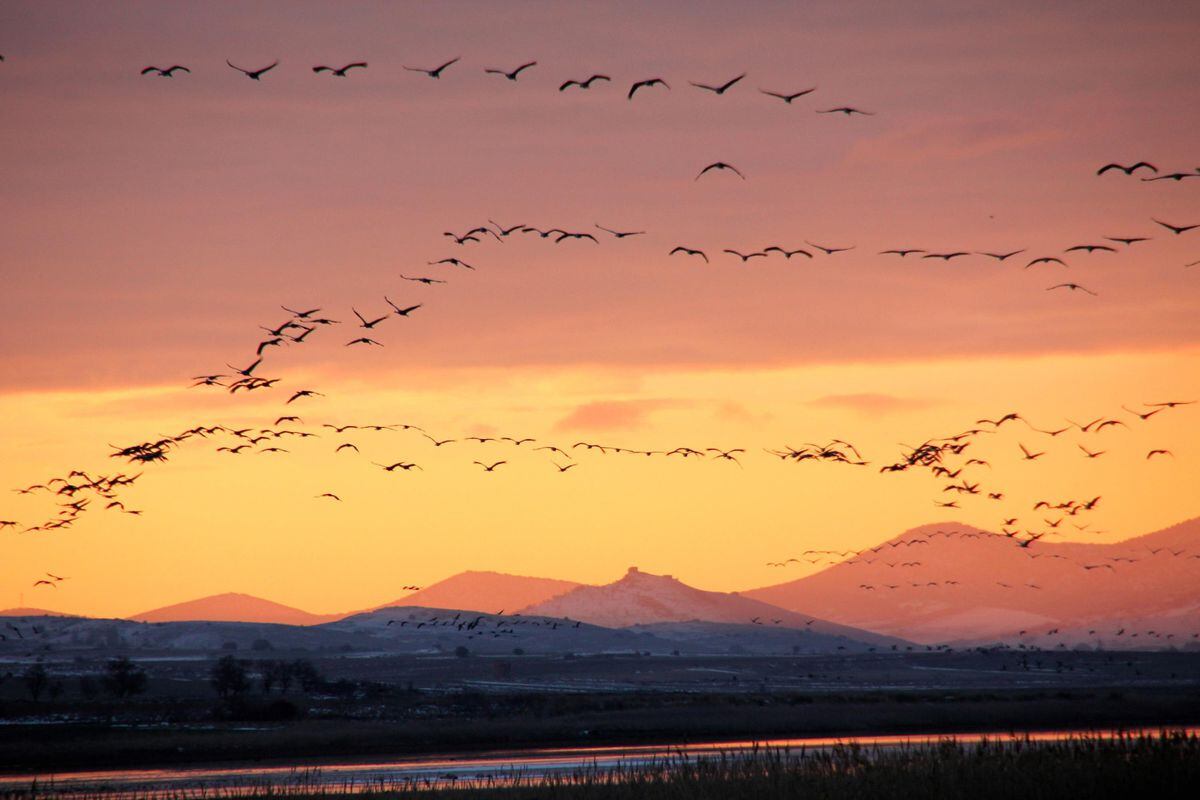Sharks, whales, turtles, birds, insects... millions of animals travel every year to their breeding places in the world and fewer and fewer arrive.
The first United Nations report on a list of 1,200 endangered migratory species concludes that half are in decline, and that the trend of the rest of the fauna of this type on the planet is the same.
Of the list investigated, 22% of the total species and 98% of the fish are in danger of extinction.
Overexploitation due to fishing and hunting;
the deterioration of habitats;
Light, acoustic, chemical and plastic pollution, in addition to climate change, are the main culprits for the fall.
“The probability of species disappearing has grown between 1990 and 2020, which represents a failure of the global agreement on migratory fauna,” reflects Juan Carlos Atienza, head of Environmental Governance at the ornithology NGO SEO/BirdLife.
The failure is that “although the decisions reached are good, the countries do not implement them and these animals cross borders, so it is not worth it that one does it and another does not,” he believes.
The report is presented this Monday at the opening of the 14th conference of the International Convention on Migratory Species of Wild Animals (CMS), which is being held between this Monday and this Saturday in Uzbekistan.
The CMS is a UN treaty of which 133 countries are part, created in 1983 with the aim of adopting coordinated measures for its conservation.
The resolutions adopted attempt to avoid habitat loss, degradation and fragmentation, problems that affect three out of four endangered migratory species in the world.
In Spain, a vital country on the migratory routes between Europe and Africa, there are clear examples of ecosystem degradation.
In Doñana, the lack of water due to the drought and the overexploitation of aquifers have caused wintering birds to fall this year to an all-time low: only 120,649 birds have arrived, less than half of what a year ago.
The study points to agriculture and the expansion of transportation and energy infrastructure as the culprits for the poor state of these habitats in the world.
Decline can cause serious problems due to the “essential” role they play in nature.
They pollinate plants, disperse seeds, transport key nutrients, hunt pests, provide food for other animals and can regulate natural spaces through predation and grazing, the report lists.
For example, bats participate in the pollination of at least 528 species of flowering plants, and help the propagation of cashew, mango, papaya, passion fruit and numerous species of ficus.
To reverse the situation, it is essential to recover the key areas for biodiversity, which the CMS has identified as the important areas that migrants use to rest or are their destination.
But half of them, 51%, lack protection and 58% are experiencing “unsustainable levels of human-caused pressure.”
Unresolved overexploitation
The animals also come across infrastructure such as dams that prevent salmon or eels from going up rivers, or wind turbines that they collide with.
Among those affected, the investigation stops at the European eel (
Anguilla anguilla
), well known in Spain for its gastronomic fame and its poor state of conservation, which last year led several renowned chefs to remove it from their menus.
Furthermore, the document continues, seven out of 10 species face overexploitation due to hunting and fishing, where accidental captures occur with nets, especially of cetaceans, birds or turtles.
And almost three-quarters of all CMS-listed land mammals are targeted by hunters, largely to satisfy domestic demand for bushmeat.
Hunting for food, sport and other purposes “is also a widespread threat to the many migratory birds that use the route between East Asia and Australasia or migrate between Africa and Europe.”
It is estimated that annually “between 11 and 36 million birds are killed or illegally captured in the Mediterranean region”, to which are added between 1.7 and 4.6 million in the Arabian Peninsula, Iran and Iraq.
“And unsustainable and illegal capture may be even higher in Southeast Asia,” points out the report, which admits that “data is lacking.”
Overfishing threatens slow-growing sharks, rays and chimeras.
Most are caught accidentally and not for consumption.
Satellite monitoring has revealed that on many occasions the areas used by migratory sharks and the areas exploited by industrial fishing fleets coincide.
This suggests, according to the study, that they are affected by large-scale fishing.
“In fact, global populations of oceanic shark and ray species have decreased by 71% since 1970, coinciding with an 18-fold increase in fishing pressure,” he clarifies.
The good news
Not everything is bad news.
The humpback whale (
Megaptera novaeangliae
), which entered the red list of the International Union for Conservation of Nature (IUCN) in 1986, is managing to move forward.
The population of the southwest Atlantic, which went from 27,000 individuals to 450 in the 1950s, has recovered 93% of its individuals.
Although there are subpopulations, the report warns, that remain in poor condition, such as that of the Arabian Sea, with less than 250 specimens.
The report also shows that it is possible to recover entire populations and species, but joint action by governments and the private sector is needed.
Coordinated local action, for example, reduced illegal bird net capture by 91% in Cyprus, and in Kazakhstan the saiga antelope was brought back from the brink of extinction.
You can follow
Climate and Environment
on
and
X
, or sign up here to receive
our weekly newsletter
Subscribe to continue reading
Read without limits
Keep reading
I am already a subscriber
_

